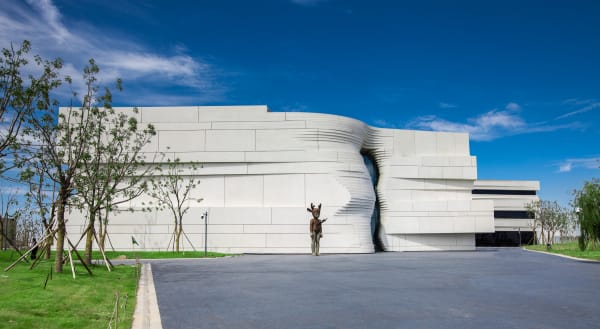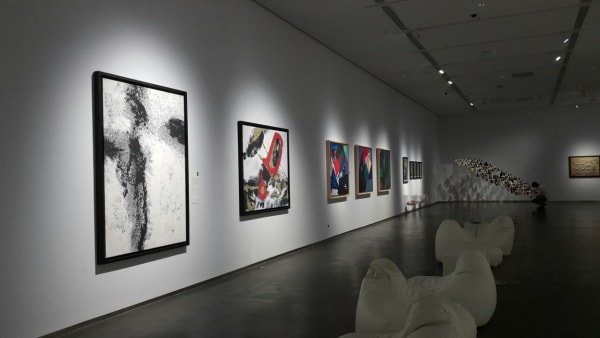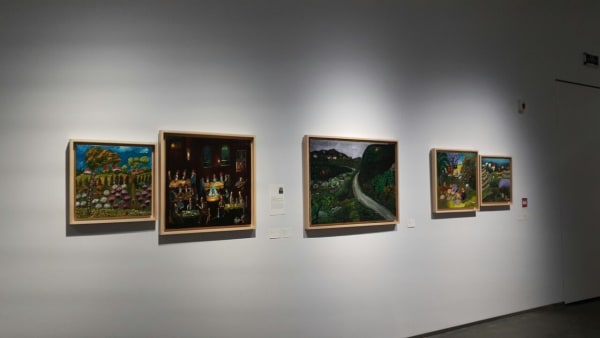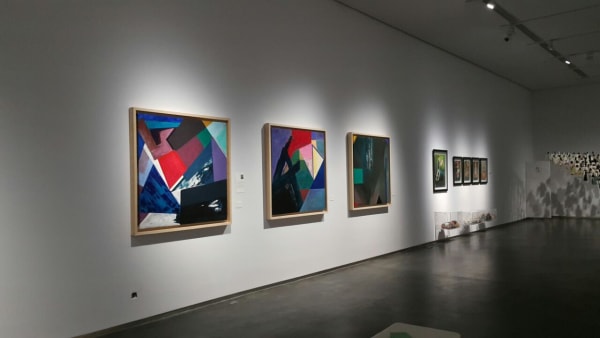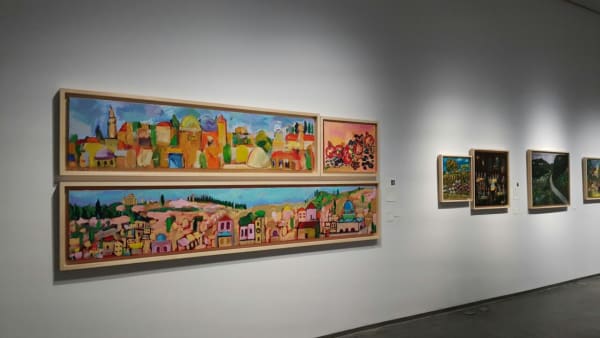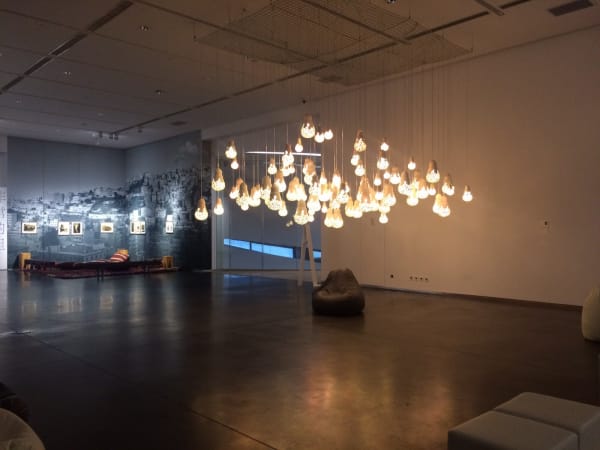MOCA Yinchuan Museum, 2015: Jordan contemporary art
Moca Yinchuan museum
 Hall no. 5
http://www.moca-yinchuan.com/
Hall no. 5
http://www.moca-yinchuan.com/
After three years of intense preparation and construction, MOCA Yinchuan will open its doors to the public on August 8th, with the inaugural exhibition Dimension of Civilization. With support from the Minsheng Culture and Arts Foundation, MOCA Yinchuan is firmly rooted in local culture, building a new platform for international artistic exchange with global Islamic art.
This exhibition reexamines the artistic history of cultural exchange between China and the West to promote a spiritual exchange between China and the world at a time of unprecedented fusion. Yinchuan is a window to the Arab and Islamic world, and as such, has the potential to bring Islamic culture to China and to enrich the cultural industries of China’s west.
MOCA Yinchuan is located along the western bank of the Yellow River, at the Huaxia-Hetu Art Town in Yinchuan, Ningxia Hui Autonomous Region. The 15,000 square meter building, designed by WAA, sits on 2.5 hectares of land. The inspiration for the building’s design comes from the folded sedimentary rock features resulting from the constantly shifting terrain along the Yellow River.
The museum collection includes hundreds of late Qing oil paintings, maps detailing early Sino-Western exchanges, contemporary Chinese artworks and Islamic contemporary artworks. These collections will form the foundation of the museum’s research on exchange between East and West, as well as various research topics relating to Chinese and Islamic contemporary art.
The theme of the inaugural exhibition, Dimension of Civilization, is an expression of a fundamental attitude toward the museum that an important trait of the globalization era is the flourishing exchanges among cultures. This leads us to place our attention on the differences and problems in the process of exchange. MOCA Yinchuan’s inaugural exhibition consists three segments: Chinese Western-style paintings of the 19th century, ancient maps of China, and contemporary art.
Accommodation of Vision—Early Chinese Western-Style Paintings, curated by Lu Peng, presents paintings from late Qing dynasty (18th-19th centuries) to show the clashes, borrowing and fusion of East and West in the world of painting. These artworks, part of the MOCA Yinchuan collection, are an integral component of Chinese art history. The Outline of Territory—Historical Map Collections, curated by Guo Liang, presents 81 maps of the world and its various regions from the 16th to 19th centuries. The maps illuminate the history of exchange between China and the West, thus outlining an international geographic context and its shifts over time. Meanwhile, the exhibition researches the art of mapmaking to present exchange, learning, imitation and change in map art from both East and West, as well as the shifting cultures and contexts under which they were produced.
MOCA Yinchuan is the only contemporary art museum in China dedicated to exchange with Muslim countries. Between East and West—Chinese and Islamic Contemporary Art, curated by Lu Peng, presents artworks from western China and Islamic regions. The aim of this exhibition segment is to engage two previous segments in a dialogue about the contemporary evolution of civilizational exchange while embodying the unique character of MOCA Yinchuan.
The city of Yinchuan also carries out its role as a channel for Islamic cultural exchange as the host of the biennial Sino-Arab Summit. Every second September, leaders from roughly 60 Arab nations travel to Yinchuan for this great exchange. This August, MOCA Yinchuan will highlight the art of this year’s “Country of Honor” with Very Contemporary Jordan—the Contemporary Art of Jordan, which will invite Jordanian contemporary artists and interpret Islamic aesthetics through an Oriental lens.
In light of Ningxia’s status as an important crux in the northwestern economy, MOCA Yinchuan has devised the exhibition Re-Folk—Transformed Traditional Elements in Contemporary Art. The exhibition, curated by Suchen Xie, invites international contemporary artists to present the ways they transform elements of traditional folk culture in graphic design, sculpture, installation art, re-creating woodcarving, folk painting, felt and paper-cutting to develop a new and diverse cultural vocabulary that continues and expands the meaning and value of traditional culture.
MOCA Yinchuan is a changing traditional exhibition model. Artworks that can be touched and interacted which can truly reach audiences. Tale of Dolls—Magic Hall of Mirrors, curated by Suchen Xie, follows the maxim of “everyone is an artist” to invite one thousand families to create dolls for presentation within a 120 square meter hall of mirrors in a work of social sculpture that closes the distance between MOCA Yinchuan and the general public.
MOCA Yinchuan is part of Huaxia-Hetu Art Town. The museum is the largest building in the 18.8 square kilometer area, situated at the core of the town. Huaxia-Hetu Art Town was developed by Ningxia Minsheng Group as an embodiment of the Eastern philosophical tradition of harmony with nature and Scandinavian ideas of sustainable urban development, and as a shared platform for art, ecology, education and life. The town is the home to MOCA Yinchuan, an artist village, a sculpture park, a world history theme park, a scenic village, an international school, a rice paddy park and a wetlands park. Over the next ten to fifteen years, nearly five billion US dollars will be invested into the town to grow it into a population of roughly 80,000 people, a sustainable town that combines art, ecology, cultural tourism and advanced agricultural practices.
With its opening and continuing practices, MOCA Yinchuan is pioneering the future of the Huaxia-Hetu Art Town.
Related artists
- X
- Tumblr
